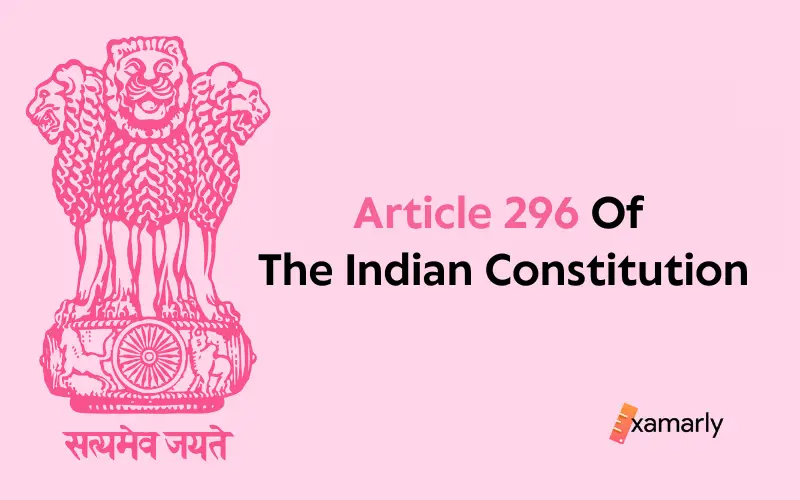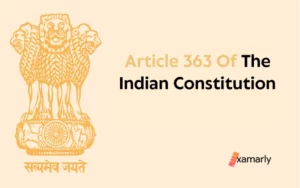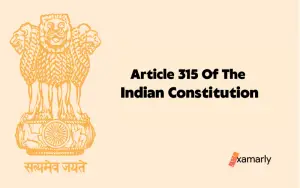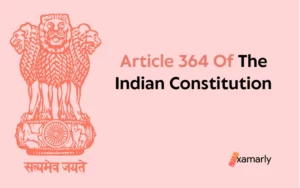Article 296 of the Indian Constitution talks about the property that may belong to the government because of things like escheat, lapse, or bona vacantia. Escheat is when the property goes back to the government because it doesn’t have a rightful owner. A lapse is when a person doesn’t claim their property and it goes back to the government.
This article provides that such property if it is located within a state, shall vest (belong) to that state. If the property is not located within a state, it shall vest in the Union (federal government).
However, there is a provision in the article that states that any property that was in the possession or control of the Government of India or a state at the time it would have accrued to the government shall vest in the Union or the state, depending on the purpose for which it was being used or held.
The article also includes an explanation that defines the terms “Ruler” and “Indian State” as they are used in the article, with these terms having the same meanings as in Article 363.
Let us understand Bona Vacantia as it is one of the pivotal aspects of Article 296 of the Indian Constitution.
What Is Bona Vacantia?
The legal term “bona vacantia” (also “vacant goods” or “ownerless goods”) refers to property that has no discernible owner.
The owner of the bona vacantia property may have lost track of, forgotten about, or otherwise abandoned the property. The term “bona vacantia” can also be used to describe the ownership status of an individual’s property after they pass away intestate (without a valid will) and leave no surviving relatives.
Different jurisdictions have different procedures for dealing with bona vacantia property. Until the rightful owners or heirs come forward, the government typically takes possession of the property in question. When someone dies without a will, the probate court is usually tasked with dividing up their estate among their heirs.
Deeper Understanding Of Bona Vacantia
Unclaimed property, known as bona vacantia, sometimes reverts to government ownership after a set period of time has passed. Bona vacantia properties are those that the government is legally obligated to maintain as a public trust.
A property or asset can become bona vacantia in a number of common scenarios. Such cases include, for instance:
It is called “intestate” when the deceased has no will and no living relatives to inherit their estate.
When a company or unincorporated group dissolves without proper distribution of its assets.
When trust is broken (frequently because estate assets have not been correctly identified and added to the trust)
When the owner of a property disappears without a forwarding address or phone number
Let us dig deep into Article 296 of the Indian Constitution and get to know everything that has been said in the Article.
Article 296 Of The Indian Constitution – In Detail
The Clause – As it is & Explained
296. Property accruing by escheat or lapse or as bona vacantia Subject as hereinafter provided any property in the territory of India which, if this Constitution had not come into operation, would have accrued to His Majesty or, as the case may be, to the Ruler of an Indian State by escheat or lapse, or as bona vacantia for want of a rightful owner, shall, if it is property situate in a State, vest in such State, and shall, in any other case, vest in the Union: Provided that any property which at the date when it would have so accrued to His Majesty or to the Ruler of an Indian State was in the possession or under the control of the Government of India or the Government of a State shall, according as the purposes for which it was then used or held were purposes of the Union or a State, vest in the Union or in that State Explanation In the article, the expressions Ruler and Indian State have the same meanings as in Article 363
The clause in Article 296 of the Indian Constitution talks about Acquired property through escheat, lapse, or bona vacantia
It says that subject as hereinafter provided, all property in India that would have accrued to His Majesty or, as the case may be, to the Ruler of an Indian State by escheat or lapse, or as bona vacantia for want of a rightful owner, shall, if it is property situate in a State, vest in such State, and shall, in any other case, vest in the Union; provided
But any property in India that would have otherwise gone to His Majesty or the ruler of an Indian state will now belong to the Government of India or the Government of a State for the purposes for which it was then used or held. In this article, “Ruler” and “Indian State” both mean the same thing as they do in Article 363.
You Might Also Like – Article 294 Of The Indian Constitution
Summing Up
We can conclude from Article 296 of the Indian Constitution that property accruing by escheat or lapse or as bona vacantia provided any property in the territory of India which, if this Constitution had not come into operation, would have accrued to His Majesty or Ruler of an Indian State.
If the property is situated in a state, it shall vest in that state; in any other case, it shall vest in the Union.
FAQs
What types of property are covered by Article 296?
Article 296 applies to property in India that would have otherwise accrued to the sovereign through processes of escheat, lapse, or bona vacantia. Escheat refers to the transfer of property to the state when an individual dies without leaving a will or legal heirs. Lapse refers to the termination of a right or privilege due to non-use or failure to meet certain conditions. Bona vacantia refers to property without an owner, such as abandoned or unclaimed property.
How is property vesting determined under Article 296?
If the property in question is located within a State, it will vest (belong) to that State. If the property is located outside of a State, it will vest in the Union. However, there is a provision that states that if the property was in the possession or control of the Government of India or a State government at the time it would have accrued to the sovereign, it will vest in the Union or the State according to the purpose for which it was being used or held at that time.
What do the expressions “Ruler” and “Indian State” mean in Article 296?
The expressions “Ruler” and “Indian State” in Article 296 have the same meanings as they do in Article 363 of the Constitution of India. In general, a “Ruler” refers to the monarch or head of an Indian State (a semi-autonomous region within the larger country of India) before the country’s independence. An “Indian State” refers to one of the semi-autonomous regions within the country of India.






